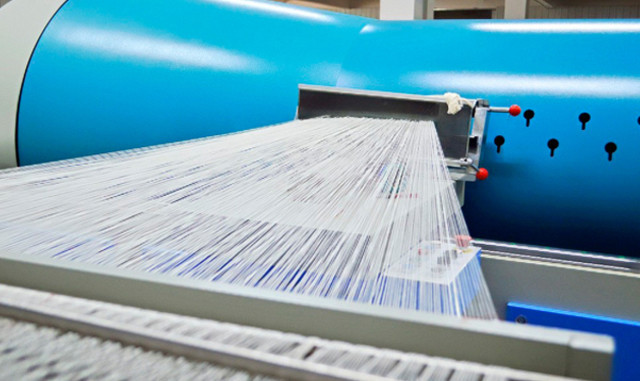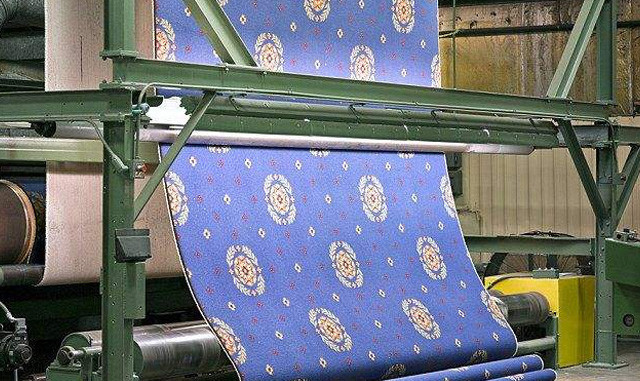The key to improving the utilization rate of textile raw materials lies in equipment
Since the beginning of this year, the focus of China's textile market has focused on cotton, and the drastic fluctuations in cotton prices have affected the nerves of all spinning, weaving and textile machinery companies. So, what is the direct relationship between cotton issues and textile machinery enterprises? In today's shortage of cotton resources and rising prices, what can textile machinery enterprises do? A few days ago, the reporter interviewed well-known equipment manufacturers in the global spinning field—— Feng Siqi, President of Rieter China.
Reporter: Since the beginning of this year, the drastic fluctuation of cotton prices not only directly affects the production and operation of downstream textile enterprises, but also the orders of upstream textile machinery enterprises are constantly changing. As a textile equipment manufacturer, how do you view cotton supply and demand, and what advice do you have?
Feng Siqi: The cost of raw materials accounts for a considerable proportion of the entire yarn cost. Therefore, how to improve the utilization rate of raw materials is particularly important in today's high cotton prices. In fact, more and more customers have taken the ability to effectively improve the utilization rate of raw materials as an important reference index when selecting equipment. It is undeniable that many equipment manufacturers are still paying more attention to how to increase the production capacity of equipment, blindly pursuing to increase the production speed, but ignoring how to use raw materials efficiently. In my opinion, this issue must be taken seriously by device manufacturers. In this regard, Rieter can be said to be ahead. We have always been trying to figure out how to use raw materials more efficiently at high speed. For example, the Rieter E66 comber, on the premise of ensuring excellent yarn quality, has a production speed of up to 500 nips/min, a maximum output of 72 kg/hour, and a 1% to 2% reduction in noil rate. The customer therefore benefits from this machine not only with efficient, high-yield and high-quality yarns, but also with maximum utilization of raw cotton.
Reporter: Since the beginning of this year, China's textile industry has once again shown an alarmingly high-speed development trend. At the same time, it has also effectively stimulated the demand for textile machinery equipment. Not only has the sales revenue of products in the entire textile machinery industry hit a record high, but only the previous In the third quarter, my country's textile machinery imports reached 3.074 billion US dollars. How long do you think this trend can continue?
Feng Siqi: I think the prosperity of the textile machinery industry this year is more of a recovery growth with the characteristics of cyclical fluctuations. But in general, China's overall economy is still in a period of expansion, and there is still much room for improvement in domestic demand. Therefore, in the long run, China's textile machinery industry will still maintain a positive growth trend, but there may be a stage of slowdown next year. Judging from the market sales this year, taking the cotton spinning industry as an example, a considerable part of the new projects are complete sets of equipment. I believe that in the future, with the continuous development of the Chinese market and more attention paid to the whole process, the sales of cotton spinning equipment will continue to grow. The whole process is very consistent with the concept of "textile system supplier" that Rieter has been adhering to, which also makes us more confident in the Chinese market.
Reporter: Under the premise that raw material prices, energy prices, labor prices are rising day by day, and the RMB exchange rate is expected to appreciate, an obvious trend in the domestic textile machinery market is that textile enterprises have greatly increased the purchase of high-end equipment. Products will be the mainstream of future market demand, which undoubtedly provides a huge market space for companies like Rieter. So, how did Rieter adapt to this market demand in product development?
Feng Siqi: In recent years, we have clearly felt that there is an increasing demand for high-end equipment from Chinese companies that pursue profit maximization. Our G35 and K45 spinning machines developed for these customers have the longest body, the highest speed, and the most advanced and reliable automatic doffing system, which makes our customers stand in the ring spinning and compact spinning again in technology. At the forefront of spinning trends. At the same time, the R40 fully automatic rotor spinning machine developed by Rieter is also very suitable for the needs of these enterprises. The length of the machine can reach 500 spindles, and the rotor speed can reach up to 160,000 rpm. It has convenient process settings, humanized operation mode, and an expert system with huge data, which can effectively reduce customers' dependence on skilled workers. In addition, Chinese textile enterprises have gradually begun to pay attention to the information factory management system in recent years, and Rieter has launched the spider web system SPIDERweb in due course. This system can collect and monitor the production and quality data of all Rieter equipment in the factory online, and display the information of the technological process in the form of charts, which can effectively improve the management efficiency of customers.
Reporter: In 1998, Rieter established the first textile machinery manufacturing plant in China in Changzhou. Today, 12 years later, Rieter will build a new factory in Changzhou. Does this move mean that Rieter's future strategic development will rely more on the Chinese market?
Feng Siqi: With the rapid development of China's textile industry, Rieter's pace in China has never slowed down. After Rieter (Changzhou) Company settled in Changzhou in 1998, it carried out a plant expansion in 2006, but only 4 years later, the current production scale is far from meeting the needs of customers. In fact, as early as 2008, we had completed the planning of the new factory, but due to the impact of the global financial crisis, the implementation of this plan was postponed until this year. In the new factory in the future, we will not only bring more textile machinery products from Europe, but also increase the training center, spinning center and spare parts warehouse in order to provide better service for Chinese customers.
In Rieter's overall development strategy, China does occupy a very important position, not only because China is the world's largest cotton spinning base, but at the same time, we also take Changzhou factory as an important part of Rieter's global supply chain. In addition to providing Chinese customers with the latest technology, it also shoulders the mission of providing spare parts, spare parts and even complete machines for overseas markets.
Reporter: In recent years, the level of China's textile machinery manufacturing industry is gradually improving, especially cotton spinning equipment has a strong competitive advantage. For Rieter, how can it win in the competition with local companies?
Feng Siqi: Yes, China's textile machinery manufacturing industry has developed very rapidly in recent years, and has achieved remarkable results in many fields. But Rieter has always insisted on conquering Chinese enterprises with the best equipment and the most advanced technology. It is undeniable that price has always been an important factor that discourages many textile companies who love Rieter equipment. In fact, with the local production of drawing frames, combers and other equipment successively in China, the price of Rieter equipment has dropped. After the new factory in Changzhou is completed, we will gradually realize the local production of a series of core technologies and equipment from blowroom to carding, drawing frame, combing and ring spinning and rotor spinning in China. On this basis, Chinese textile enterprises can enjoy Swiss-quality "Made in China" textile machinery at a more favorable price.








 Tel:+86-519-86709609
Tel:+86-519-86709609 Fax:+86-519-86708989
Fax:+86-519-86708989 Mail:shenghui@shenghuitextile.cn
Mail:shenghui@shenghuitextile.cn Address: Donghua Village Industrial Park, Hutang Town, Changzhou City
Address: Donghua Village Industrial Park, Hutang Town, Changzhou City